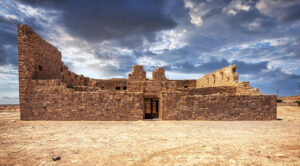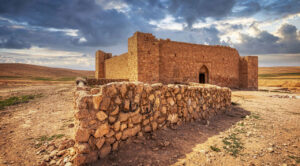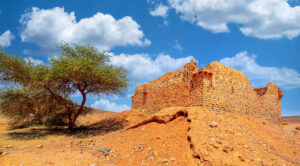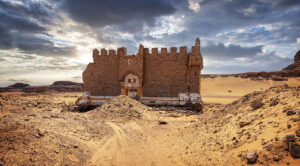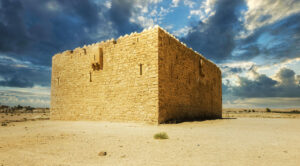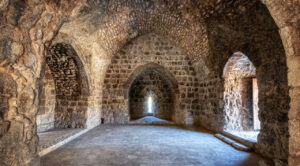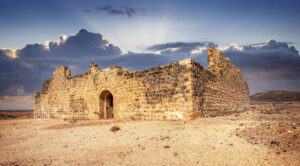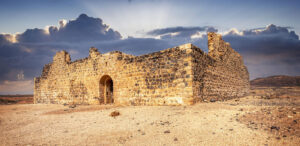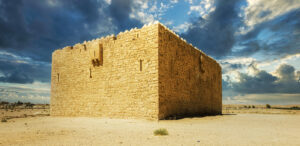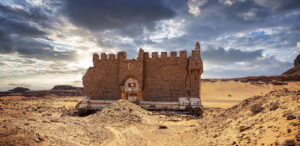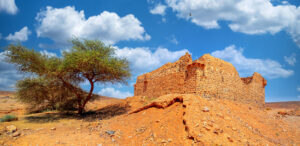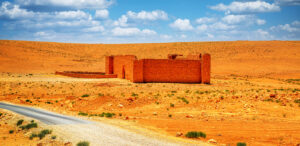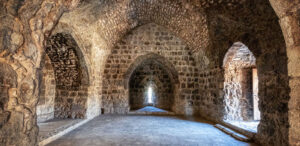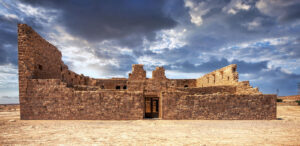Qal‘at Dab‘a (previously Qal‘at Balqa‘) is located to the east of the Medieval …
Qal’at Qatrana is located to the south of Qatrana village, 95km from Amman …
Qat’al Al-Hasa is located 5 km north-west of Hejaz Railway Station …
The site of ‘Unaiza stands on the central Jordan plateau, next to the Desert …
Qal’at Fassu’a is located 2 km west of Muhattat Fassu‘a, on the Hijaz …
This site lies in a sandy desert at the southernly most point of Jordan …
Jordan’s Ottoman Hajj Forts
GUIDE TO OTTOMAN FORTS EN ROUTE TO MECCA
Although the Hajj from Cairo to Mecca (Darb al-Hajj al-Masri) had been the principal concern of the Mamluks, they also supported the Syrian Hajj route which was accorded almost equal status. However, whilst the Egyptian overland route had been provided with fortresses and other facilities as early as the thirteenth century, the Syrian route had no forts except for the castles of Zizia and Qasr Shebib in Zarka. Instead, it appears that the Mamluk Hajj caravan from Damascus followed a route largely without facilities except for those provided at the few settlements on the way, for example, Karak Castle.
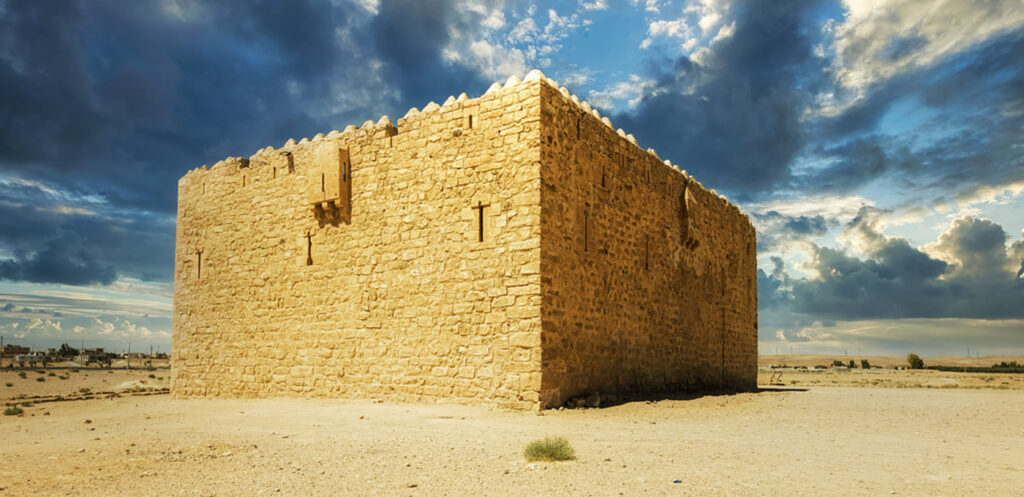
Within a few years of the conquest of Syria the Ottoman Sultan Selim I had ordered the construction of fortresses at Sanamayn, Muzayrib and Mafraq all within sixty kilometres of Damascus. By 1570 the network was extended deep into the Hijaz with forts at Qatrana, ‘Unaiza, Ma’an and a few others. The forts were of a standardised plan probably derived from medieval caravanserais. Each fort measures approximately 20 metres per side with three stories (ground floor, first floor and upper floor with parapet) built around a rectangular courtyard. The forts were built of local materials and were generally plain in their appearance with little decoration except that above the gateway. Unfortunately, the decoration above the entrances has disappeared in many of the forts though it has been preserved at Qatrana where there are three decorative balls above the entrance. Although some of the forts were built on earlier sites (mostly Roman) there is little evidence of direct continuity of use/ occupation at any of the sites. Despite their simple appearance, the forts were an unmistakable sign of Ottoman authority and power expressed through the precision and solidity of the masonry. Each of the sixteenth-century forts was located next to a significant water supply outside the walls.
The next major phase of fortress construction occurred in the eighteenth century. Forts built during this period include Qal‘at Dab’a, Qal‘at al-Hasa, Qal‘at Fassu‘a and Qal’at Mudawwara. The architecture of the eighteenth-century forts differs from that of the sixteenth-century buildings. The main difference is that most of the eighteenth-century buildings have projecting corner turrets provided with narrow gun slits. The other notable difference is that the later forts are even plainer than those of the sixteenth century thus there is no carved stone decoration above the doorways similar to that which can be seen at Ma‘an and Qatrana. The change in the design of the forts was probably a response to the acquisition of firearms by the Bedouin which was both technological development and a result of changing patterns of trade. Before the eighteenth century, the Bedouin did not possess guns that could be fired from horseback and consequently were unable to mount a serious attack on a fort or well-defended caravan.
The Hajj forts were undoubtedly part of the defence system of the Red Sea coast of Arabia. They provided a secure line of communication directly between the Hijaz, Syria and ultimately Anatolia. This enabled Ottoman troops to move relatively rapidly down along the Red Sea coast to Mecca and Medina and ultimately to Yemen.
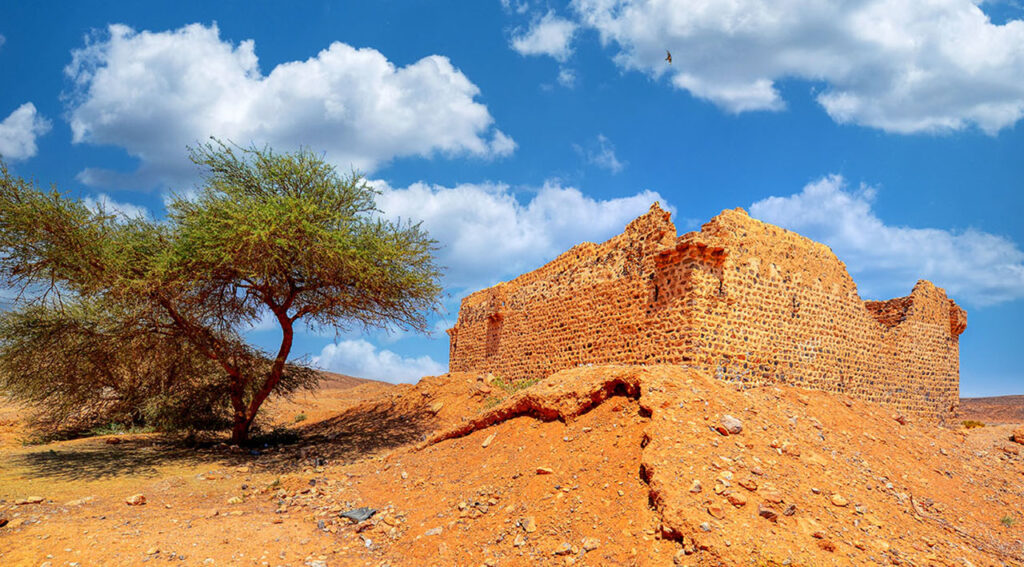
Anybody who has visited any of these forts can appreciate the massive effort required to build them in remote locations so far removed from the centres of power.
The four centuries of Ottoman rule (1516-1918 CE) were a period of general stagnation in Jordan. The Ottomans were primarily interested in Jordan in terms of its importance to the pilgrimage route to Mecca. They built a series of fortresses to protect pilgrims from the desert tribes and to provide them with sources of food and water. However, the Ottoman administration was weak and could not effectively control the Bedouin tribes. Throughout Ottoman rule, many towns and villages were abandoned, agriculture declined, and families and tribes moved frequently from one village to another. The Bedouins, however, remained masters of the desert, continuing to live much as they had for hundreds of years. The population continued to dwindle until the late 19th century when Jordan received several waves of immigrants.
The Ottoman period saw general neglect of infrastructural development in Jordan, and what was constructed was usually with some specific religious orientation. For instance, castles such as Qatrana were built to protect pilgrimage routes, while most schools, hospitals, baths, wells, orphanages and, of course, mosques, were built with a particular religious function in mind. The most significant infrastructural development of the Ottoman period was the Hijaz Railway from Damascus to al-Madina al-Munawarra in 1908. Designed originally to transport pilgrims to Mecca al-Mukarrama, the extension from al-Madina al-Munawwara was never completed, the railway was also a useful tool for ferrying Ottoman armies and supplies into the Arabian heartland. Because of this, it was attacked frequently during the Great Arab Revolt of World War I.
